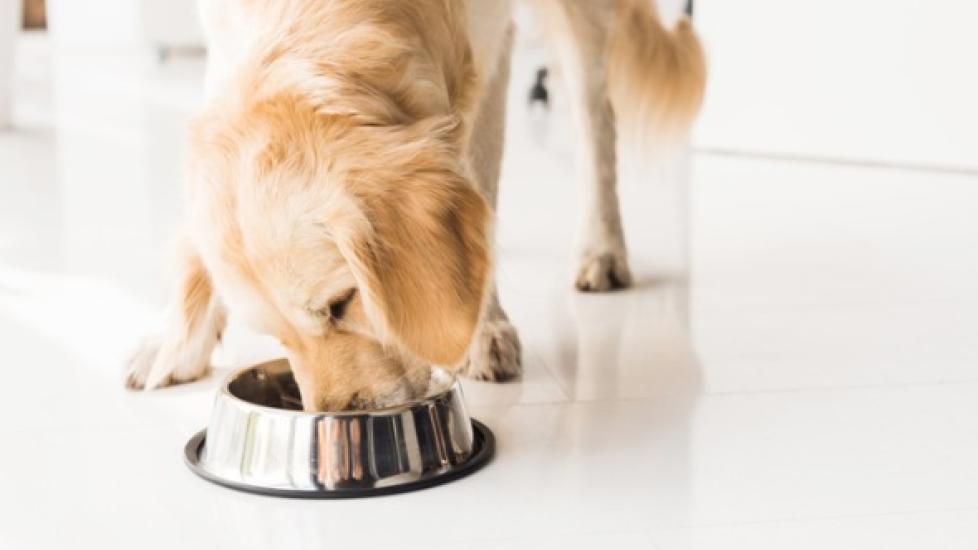Controlling Your Pet’s Eating Behavior
Some pets eat like they are never going to see food again, gulping it down so fast they barely have time to chew it, let alone taste it. If it seems that your dog or cat is eating meals faster than necessary, and is behaving in an obsessive manner towards the food, there are some methods you can use to modify your pet’s behavior.
Why is Eating Fast Bad?
First, why should you be concerned with your pet’s eating speed? Because they are not chewing their food thoroughly, rapid eating can lead to choking or gagging. Also, because this type of eating behavior often is associated with greedy behavior, it can lead to aggressive behavior if another pet or person comes close while the animal is eating. In households with children or other animals, an animal that gobbles down its food can be a danger to anyone it perceives as a competitor for its food.
There is also a medical condition that affects some animals, especially large-breed dogs, called gastric dilatation-volvulus (GDV). The rapid eating and gulping results in excessive air, fluid and food filling the stomach, followed by swelling (dilatation) of the stomach cavity. As the stomach expands, it can twist around on its axis (volvulus), making it impossible for anything to pass through the stomach to the intestines. If this occurs, the animal can go into shock and die quickly.
What Causes This Behavior?
For some puppies and kittens, mealtime is a competition to get enough food before it is all gone -- a casualty of their littermates and the adult animals. It may have even started while the animal was nursing. This becomes a pattern of behavior, and is carried on into a new home. The behavior may be most pronounced when there are other animals in the home, but it may also be present even if s/he no longer has competitors.
Of course, there are also underlying medical conditions that can lead to this behavior. Your pet may be infected with parasites that are affecting the body’s ability to absorb the nutrients in the food. Another possibility to consider is that the food is simply nutritionally inadequate for the animal’s needs and is leaving the animal feeling hungrier than it should as a result.
What Can Be Done?
There are several possible solutions you can try to modify your pet’s behavior. One recommendation is to place objects such as toys or balls that are too large to swallow in the food bowl -- with the food -- so that the animal must eat around the object. Another method using the same idea is to partition the food by placing a smaller bowl inside the larger bowl. Placing the small bowl upside down in the larger bowl, pour the food into the space around the small bowl. This makes it so that your pet can only take small bites from the narrowed space. Or, if time is not an issue, you can try feeding your pet small meals throughout the day, so that large amounts cannot be consumed at once.
There are also feeding bowls that are designed to slow an animal’s eating speed. These bowls are often made with embedded pegs in the hollow of the bowl, so that the animal cannot grab large bites all at once. Other products are made to disperse the food slowly. A timed dish that allows specific amounts at a time; a compartmentalized dish that the animal must adjust to get to the small portions of food (such as sliding tops that can be moved with the paw or snout); or a ball that holds food but must be manipulated by the pet to release the contents from the ball.
As far as nutritional concerns, make sure to feed your pet a high-quality, highly digestible cat or dog food so that you can be sure that his or her nutritional needs are being met.
And, as a matter of course, you should make sure that your pet is free from parasites. A regular good health visit with a veterinarian should turn up anything that should not be there, and if anything is found, it can be treated before it becomes a life threatening issue. In any case, if your pet is behaving in an aggressive way while eating and you have children or other pets in the home, you will need to protect them by setting aside a space where your pet can eat without feeling threatened and defensive.
See Also
Featured Image: iStock.com/LightFieldStudios
